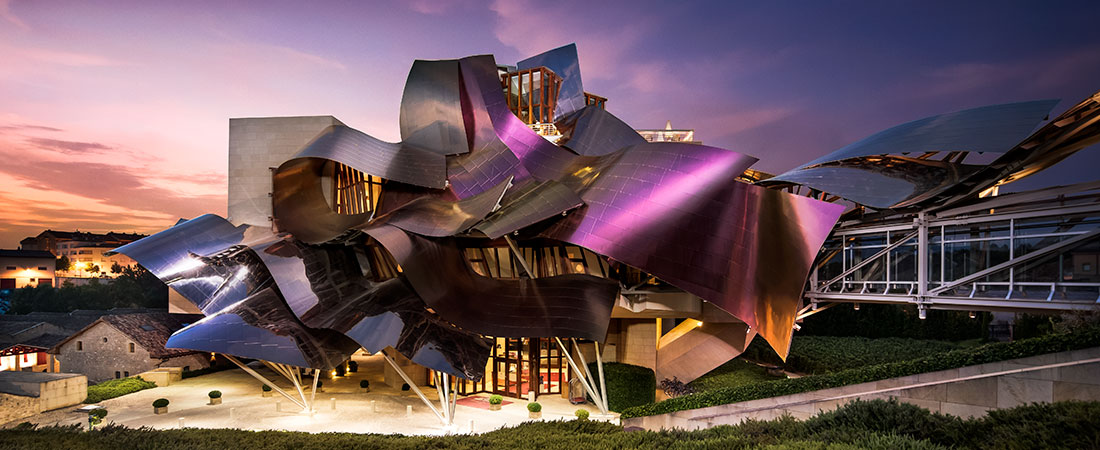Hola!
For today’s post, I would like to discuss one of my favorite buildings.
It is located less than an hour away from my hometown: Elciego, La Rioja, Spain.
This building is a hotel for the Marques de Riscal winery. Currently the Second best wine and vineyard on the world.The hotel lets the wealthy tourists stay at the hotel while they enjoy a visit to the winery, the town, and La Rioja.
This breathtaking and gravity challenging structure, is a delight to explore both from outside and from inside.
It has Gehry identity touch, the titanium and steel waves that bend and twist beyond imaginable. The building stands out with its silhouette and the contrast it creates with the medieval village that is located in. The curved lines create a welcoming space for guests and a soft atmosphere that fits quite well the hotel’s mission to provide a relaxed stance. I would also like to point out that with the wooden parts of the structure also curving and changin, I believe that it could also represent the dizziness when one is very drunk on wine…but I do not know if that is what he had in mind…
Frank Gehry wanted to create a chateau for the XXI century. A reference for one of the oldest wineries of La Rioja. This is the reason why we see a delightful palette of colors that are not common to find in his work. The loops and twist of pink, golden and silver resemble the wine, the net of the wine bottles, and the capsules for them that Marques de Riscal uses. This color combination definitely speaks of luxury and desires.
It has been described by a wild mane flowing with the air and falling into the vineyards. Because the vineyards are right there, bathing in the sun and then drinking the last of the sun rays that get reflected with pretty colors from the facade at sunset. This shape has also been compared to rivers of wine descending from the hill, and it is so memorable that the Bodega has adapted their logo to feature the hotel.
I have visited the Bodega and seen the Hotel from outside. It is really fun to see the plays of light on the facade, and to walk through bending door frames. However, I do not have the money (or the need) to stay inside the hotel. The view from the Gehry suit promises to be breathtaking, and there is a little balcony on top where you can get a panoramic view of La Rioja and even the Basque Country.
They do plan weddings and use the vineyards as the venue, so I will do my best to befriend a couple with some money and be invited to their weding so I can roam inside the hotel a little bit more… just jocking!
Anyways, if you plan to visit Spain, do not miss out La Rioja with our wine and secret gems like this!



This building is absolutely stunning. I will definitely have to visit if I ever get the chance. The shape of the building is mesmerizing and I didn't realize at first glance that the pinks were a part of the color pallet. I assumed that it was the reflection of the sunset on the metal. That is truly amazing that a building like this was created.
ReplyDelete